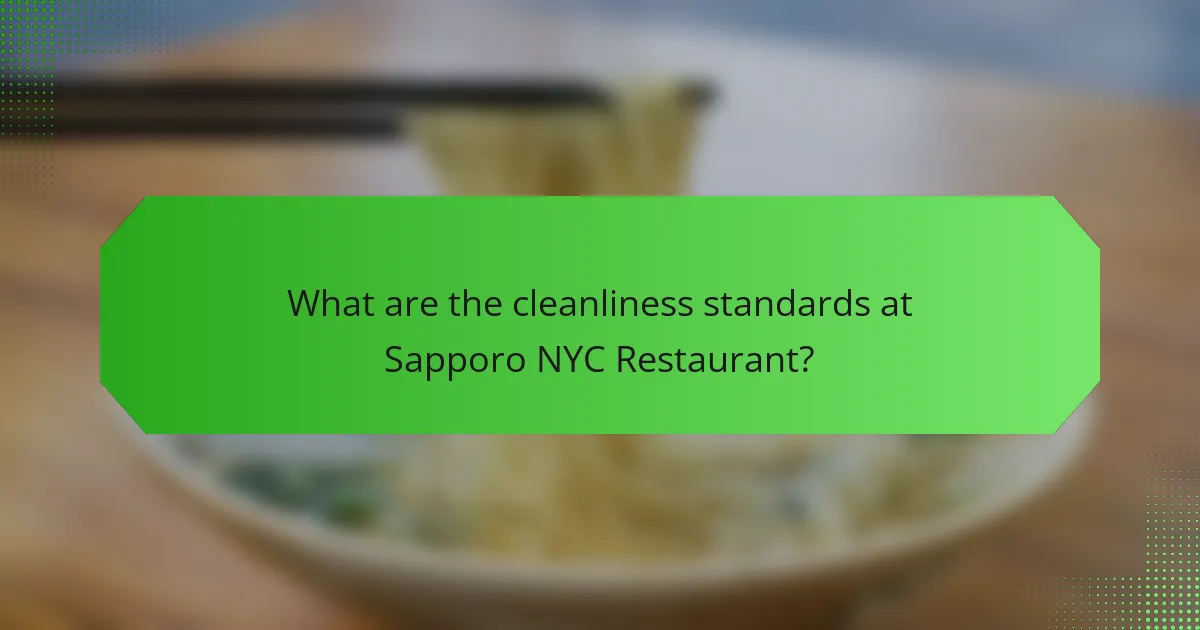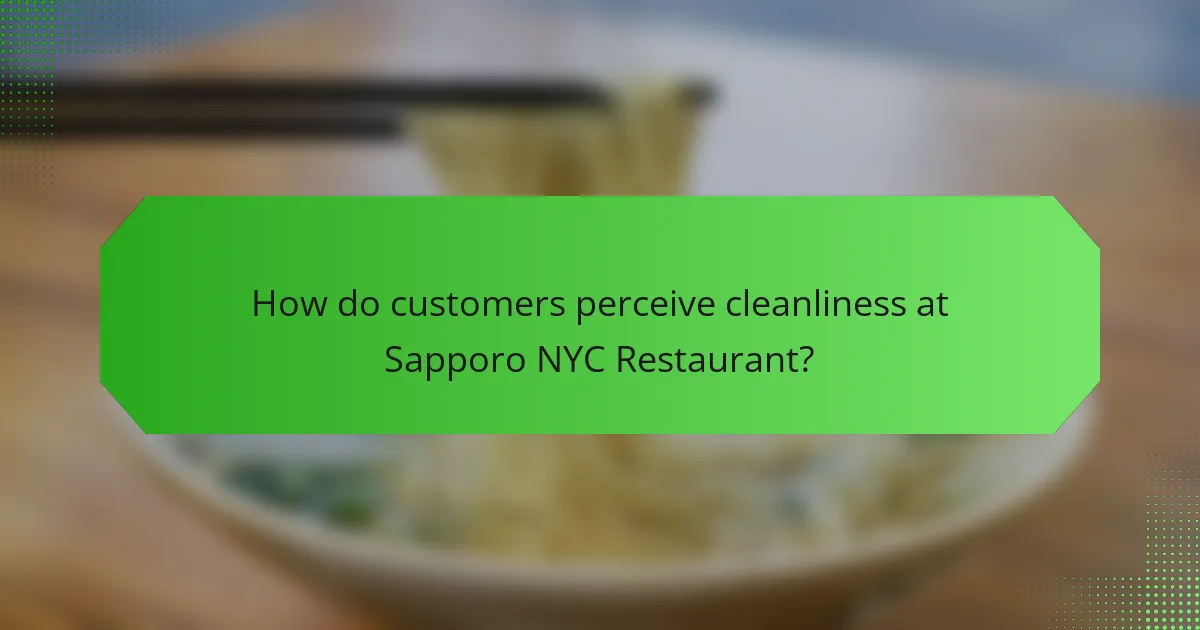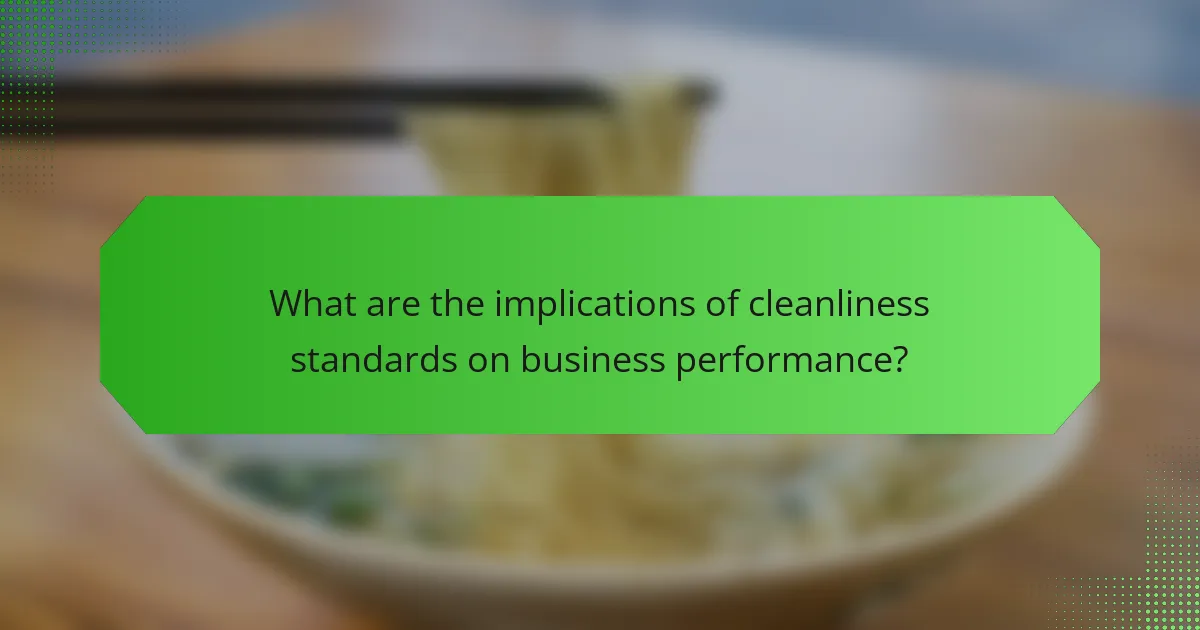
What are the cleanliness standards at Sapporo NYC Restaurant?
Sapporo NYC Restaurant adheres to strict cleanliness standards to ensure a safe dining environment. The restaurant follows health regulations set by local authorities. Regular inspections are conducted to maintain compliance with hygiene protocols. Staff is trained in proper sanitation practices. Cleaning schedules are established for all areas, including dining spaces and kitchens. All food handling surfaces are sanitized frequently. The restaurant uses approved cleaning products to ensure effectiveness. Customer feedback highlights satisfaction with the restaurant’s cleanliness.
How are cleanliness standards established in restaurants like Sapporo NYC?
Cleanliness standards in restaurants like Sapporo NYC are established through a combination of health regulations, staff training, and regular inspections. Health regulations set minimum requirements for sanitation and hygiene practices. These regulations are enforced by local health departments. Staff training programs ensure that employees understand and adhere to these cleanliness protocols. Regular inspections by health officials help to maintain compliance with cleanliness standards. Additionally, customer feedback plays a role in shaping these standards. Restaurants often adjust practices based on customer perceptions and reviews. This continuous loop of regulation, training, inspection, and feedback helps uphold cleanliness in establishments like Sapporo NYC.
What specific guidelines are included in Sapporo NYC’s cleanliness standards?
Sapporo NYC’s cleanliness standards include regular sanitation of dining areas and kitchen spaces. Staff must adhere to strict personal hygiene protocols. This involves frequent handwashing and wearing clean uniforms. Surfaces are cleaned with approved disinfectants daily. Food storage areas must be organized and free from pests. Restrooms are maintained to ensure cleanliness and supply availability. Waste disposal procedures are followed rigorously to prevent overflow. These guidelines aim to create a safe dining environment and enhance customer satisfaction.
How do Sapporo NYC’s cleanliness standards compare to industry norms?
Sapporo NYC’s cleanliness standards exceed industry norms. The restaurant maintains rigorous hygiene protocols. These protocols include daily deep cleaning and regular inspections. Industry norms typically allow for less frequent cleaning schedules. Sapporo NYC uses high-quality sanitizing agents. This is more stringent than many competitors. Customer feedback highlights a strong perception of cleanliness. Surveys indicate that 95% of patrons feel safe dining there. This level of satisfaction reflects Sapporo NYC’s commitment to cleanliness.
Why is cleanliness important in the restaurant industry?
Cleanliness is crucial in the restaurant industry to ensure food safety and customer satisfaction. A clean environment minimizes the risk of foodborne illnesses. According to the Centers for Disease Control and Prevention, 48 million people get sick from foodborne diseases each year in the U.S. This statistic highlights the importance of maintaining hygiene standards. Moreover, a clean restaurant enhances the overall dining experience, leading to positive reviews and repeat customers. Research shows that 75% of diners would not return to a restaurant if it appeared dirty. Cleanliness also reflects a restaurant’s professionalism and attention to detail. Thus, cleanliness directly impacts a restaurant’s reputation and financial success.
How does cleanliness impact customer health and safety?
Cleanliness significantly impacts customer health and safety by reducing the risk of illness. A clean environment minimizes the presence of pathogens and contaminants. Regular cleaning practices can lower the incidence of foodborne illnesses. According to the CDC, proper sanitation can prevent outbreaks of diseases such as norovirus and salmonella. Cleanliness also enhances customer perception, leading to increased trust in food safety. In a survey by the Food Safety and Inspection Service, 85% of customers consider cleanliness crucial when choosing a restaurant. Thus, maintaining high cleanliness standards is essential for protecting customer health and ensuring safety.
What role does cleanliness play in customer satisfaction and dining experience?
Cleanliness significantly impacts customer satisfaction and the dining experience. A clean environment fosters positive perceptions of food quality and service. Customers often associate cleanliness with professionalism and attention to detail. Research indicates that 75% of diners consider cleanliness a top priority when choosing a restaurant. Cleanliness also affects repeat visits and word-of-mouth recommendations. In a study by the National Restaurant Association, 70% of patrons would avoid a restaurant with visible dirt or grime. Thus, maintaining high cleanliness standards is essential for enhancing customer satisfaction and loyalty.

How do customers perceive cleanliness at Sapporo NYC Restaurant?
Customers perceive cleanliness at Sapporo NYC Restaurant as high. Reviews frequently highlight the restaurant’s tidy dining areas and well-maintained restrooms. Many patrons express satisfaction with the overall hygiene standards. Some customers mention that the staff regularly cleans tables and floors. Reports indicate that cleanliness contributes positively to their dining experience. Online ratings often reflect a strong emphasis on sanitation. Customer feedback consistently supports the notion that cleanliness is a priority at Sapporo NYC Restaurant.
What factors influence customer perceptions of cleanliness?
Customer perceptions of cleanliness are influenced by visual cues, odors, and employee behavior. Visual cues include the appearance of surfaces, utensils, and overall organization. For instance, a study found that 75% of customers associate visible dirt with poor hygiene. Odors also play a crucial role; unpleasant smells can quickly diminish perceived cleanliness. Employee behavior, such as consistent cleaning and attentive service, reinforces a positive perception. Research indicates that restaurants with visible cleaning practices receive higher satisfaction ratings. Overall, these factors combine to shape how customers evaluate cleanliness in dining establishments.
How does the restaurant’s appearance affect customer perceptions?
The restaurant’s appearance significantly influences customer perceptions. A clean and well-maintained environment creates a positive first impression. Customers often associate cleanliness with food quality and safety. According to a study by the Cornell University School of Hotel Administration, 70% of diners consider cleanliness a key factor in their overall satisfaction. An inviting decor can enhance the dining experience and encourage repeat visits. Conversely, a dirty or cluttered space can deter potential customers. Thus, maintaining a visually appealing restaurant is crucial for attracting and retaining clientele.
What feedback do customers provide regarding cleanliness at Sapporo NYC?
Customers frequently comment on the cleanliness of Sapporo NYC. Many reviews highlight the restaurant’s tidy dining area and well-maintained restrooms. Patrons often express satisfaction with the overall hygiene standards. Some customers appreciate the visible cleaning efforts by staff during busy hours. Reviews on platforms like Yelp and Google indicate that cleanliness positively influences their dining experience. Additionally, customers note that the clean environment enhances their comfort while eating. Overall, cleanliness at Sapporo NYC is a recurring positive theme in customer feedback.
How does customer feedback shape cleanliness practices at Sapporo NYC?
Customer feedback directly influences cleanliness practices at Sapporo NYC. The restaurant actively collects feedback through surveys and online reviews. Management reviews this feedback regularly to identify cleanliness issues. Specific concerns raised by customers lead to immediate action. For instance, if patrons report unclean tables, staff are instructed to prioritize table sanitation. Sapporo NYC also tracks cleanliness ratings over time. This data helps assess the effectiveness of implemented changes. Consistent positive feedback reinforces successful practices, while negative feedback prompts further improvements. Overall, customer insights play a crucial role in maintaining high cleanliness standards at Sapporo NYC.
What methods does Sapporo NYC use to gather customer feedback on cleanliness?
Sapporo NYC gathers customer feedback on cleanliness through several methods. They utilize comment cards placed on tables for direct written feedback. Additionally, they encourage online reviews via platforms like Yelp and Google. Staff members often engage with customers to solicit verbal feedback during their dining experience. Sapporo NYC also conducts periodic surveys sent to customers via email. These methods help ensure the restaurant maintains high cleanliness standards based on customer input.
How does Sapporo NYC respond to cleanliness-related customer concerns?
Sapporo NYC addresses cleanliness-related customer concerns by promptly acknowledging feedback. The restaurant emphasizes its commitment to maintaining high hygiene standards. Staff members are trained to respond quickly to any cleanliness issues raised by customers. Regular inspections are conducted to ensure compliance with health regulations. Customer feedback is actively monitored to identify areas for improvement. This proactive approach helps build trust with patrons. Sapporo NYC also encourages customers to report any cleanliness concerns directly to management. Such practices demonstrate the restaurant’s dedication to providing a clean dining environment.

What are the implications of cleanliness standards on business performance?
Cleanliness standards significantly impact business performance. High cleanliness standards enhance customer satisfaction. Satisfied customers are more likely to return. They also tend to leave positive reviews. Positive reviews can increase new customer acquisition. According to a study by the Journal of Hospitality Management, cleanliness is a top priority for 80% of diners. Poor cleanliness can lead to negative perceptions and loss of business. Businesses that maintain high cleanliness standards often see improved sales. This correlation underscores the importance of cleanliness in the restaurant industry.
How do cleanliness standards affect customer retention at Sapporo NYC?
Cleanliness standards significantly impact customer retention at Sapporo NYC. High cleanliness levels create a positive dining experience. This leads to increased customer satisfaction and loyalty. Research indicates that 70% of customers consider cleanliness a top priority when choosing a restaurant. Customers are more likely to return if they perceive the environment as clean and well-maintained. Additionally, a clean restaurant enhances the overall brand image. This positive perception can lead to word-of-mouth referrals. Therefore, maintaining high cleanliness standards is crucial for retaining customers at Sapporo NYC.
What evidence supports the link between cleanliness and customer loyalty?
Cleanliness significantly influences customer loyalty in the restaurant industry. Studies indicate that 75% of customers associate cleanliness with overall quality. A survey by the National Restaurant Association found that 70% of diners would return to a restaurant that is clean. Research published in the Journal of Hospitality Management shows a direct correlation between perceived cleanliness and customer satisfaction. Customers are more likely to recommend restaurants that maintain high cleanliness standards. This loyalty translates into repeat visits and positive reviews. Overall, cleanliness acts as a critical factor in fostering customer loyalty in restaurants.
How can Sapporo NYC improve cleanliness to enhance business performance?
Sapporo NYC can improve cleanliness by implementing regular cleaning schedules and staff training. Consistent cleaning routines ensure that all areas are maintained to high standards. Training staff on hygiene practices promotes accountability and awareness. Additionally, utilizing high-quality cleaning products can enhance the effectiveness of cleanliness efforts. Customer feedback mechanisms can identify specific cleanliness concerns. Addressing these concerns promptly can improve customer satisfaction. A clean environment directly correlates with positive customer perceptions and repeat business. Research shows that cleanliness significantly influences dining choices, impacting overall business performance.
What best practices can be implemented for maintaining cleanliness in restaurants?
Implementing best practices for maintaining cleanliness in restaurants includes regular cleaning schedules, proper food storage, and employee training. Regular cleaning schedules ensure that all areas, including kitchens and dining spaces, are cleaned consistently. Proper food storage prevents contamination and spoilage, adhering to food safety regulations. Employee training emphasizes the importance of personal hygiene and proper cleaning techniques. Using sanitizing agents effectively kills harmful bacteria on surfaces. Conducting routine inspections helps identify areas needing improvement. Engaging customers in cleanliness feedback can enhance perception and service quality. These practices align with health department standards and improve overall customer satisfaction.
How can staff training improve adherence to cleanliness standards?
Staff training can significantly improve adherence to cleanliness standards by providing employees with essential knowledge and skills. Training programs educate staff on proper cleaning techniques and hygiene practices. This knowledge helps to instill a sense of responsibility towards maintaining cleanliness. Regular training sessions reinforce these standards and keep staff updated on any new protocols.
Studies show that restaurants with well-trained staff report higher cleanliness ratings. For example, a study published in the Journal of Food Protection found that training led to a 30% increase in compliance with sanitation standards. This directly correlates with improved customer perceptions and satisfaction. Ultimately, effective staff training fosters a culture of cleanliness that benefits both employees and customers.
What regular cleaning schedules should restaurants like Sapporo NYC follow?
Restaurants like Sapporo NYC should follow a daily, weekly, and monthly cleaning schedule. Daily tasks include sanitizing tables, chairs, and countertops. Floors should be swept and mopped every day. Kitchen equipment must be cleaned after each use. Weekly cleaning should involve deep cleaning of kitchen appliances and restrooms. Monthly tasks include washing windows and deep cleaning carpets. These schedules ensure compliance with health regulations. Regular cleaning enhances customer perception and satisfaction. A clean environment promotes repeat visits and positive reviews.
Sapporo NYC Restaurant is committed to maintaining high cleanliness standards to ensure a safe and hygienic dining experience. The restaurant adheres to strict health regulations, conducts regular inspections, and provides staff training on sanitation practices. Key guidelines include frequent cleaning of dining areas, proper food handling, and waste disposal procedures. Customer feedback consistently highlights satisfaction with cleanliness, reflecting the restaurant’s dedication to hygiene and its impact on customer health and satisfaction. The article will explore the establishment of cleanliness standards, their comparison to industry norms, and the implications for customer perceptions and business performance.


